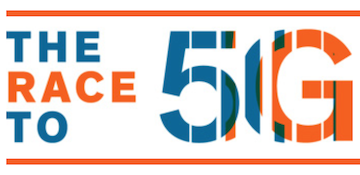
5G is in Danger of Being Oversold
Commercial service is years away, but even then, 5G won’t fulfill all of its promises
By Stacey Higginbotham
Just like graphene or Elon Musk’s startups, 5G has become a technology savior. Proponents tout the poorly defined wireless technology as the path to virtual reality, telemedicine, and self-driving cars.

But 5G is not a technology—it’s a buzzword unleashed by marketing departments. As early as 2012, Broadcom was using it to sell Wi-Fi. In reality, 5G is a term that telecommunications investors and executives sling around as the solution to high infrastructure costs, the need for more bandwidth, and a desire to boost margins.
The unifying component behind 5G is faster wireless broadband service. A more stringent—and practical—definition is the use of high-frequency millimeter waves (in addition to the microwaves that 4G LTE relies on today) to deliver over-the-air broadband to phones or homes.
If you’re talking about phones, 5G is still years away. And new services aren’t really on the menu. Just listen to the heads of several telecommunications companies, who have begun to tamp down investors’ expectations around what 5G can deliver.
At an industry event last November, Gavin Patterson, CEO of BT Group, which operates British Telecommunications, said commercial service remains a long way off. The transition from 3G networks to 4G networks happened quickly, he said, because there was immediate demand for faster data, driven largely by smartphones. From his perspective, those 4G networks are still humming along just fine.
At the same event, Johan Wibergh, CTO of Vodafone, said the real benefit of 5G is efficiency—the ability to deliver more bits at a lower cost. He claims that 5G will be 10 times more cost efficient than 4G LTE. That’s a good reason to upgrade, but not until carriers feel more pressure to improve profits.
Meanwhile in the United States, Verizon and AT&T are rolling out 5G networks, but not for phones. Instead, they’re focused on the home broadband market, delivering what’s known as fixed wireless service over millimeter waves. Millimeter-wave spectrum is freely available for 5G for a reason—it has terrible signal propagation. Any obstacle in a signal’s path, including rain, trees, and people, can disrupt it.
These links are cheaper to deploy than fiber, which explains why Verizon will launch its first fixed wireless service in Sacramento, Calif., later this year. Meanwhile, AT&T has been testing its own 5G broadband service in Austin, Texas; Kalamazoo, Mich.; and South Bend, Ind.
Small and midsize cities could be the perfect match for 5G broadband, according to Harold Feld, a senior vice president at the consumer advocacy group Public Knowledge. Feld sees 5G as a potential source of competition for consumers in areas where major telecommunications firms have refused to lay fiber.
But 5G can’t solve the problem of rural connectivity. The technologies deployed for it will ultimately work best in suburbs and densely packed downtowns. And rural operators worry about being pushed out of their own markets.
First, 5G will do a credible job of providing faster broadband to homes and offices in cities and towns. Then, once its signal propagation challenges are sorted out, it will deliver mobile data. It may even introduce new competition to certain markets. But it isn’t magic, and rural customers deserve a better solution.
This article appears in the March 2018 IEEE Spectrum issue as “Curb Your 5G Enthusiasm.”
No Comments




